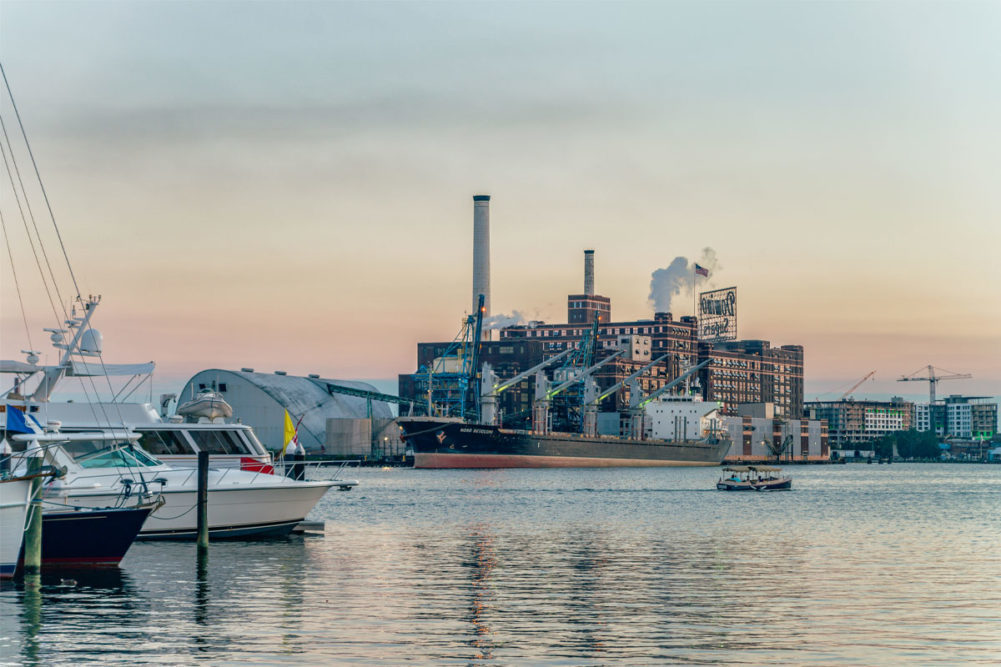BALTIMORE — The first major section of debris was removed from the collapsed Francis Scott Key Bridge area the evening of March 31, while an alternative channel into and out of the Port of Baltimore was being established for restricted use.
The Captain of the Port was preparing to establish a temporary alternate channel on the northeast side of the main channel in the vicinity of the bridge for “commercially essential vessels” directly involved in response efforts, the Key Bridge Response 2024 Unified Command said.
The alternative channel does not open the port to commercial cargo vessels but should help speed clearing of debris. No timetable has yet been provided for when cargo vessels may resume moving through the port.
“This will mark an important first step along the road to reopening the port of Baltimore,” said Captain David O’Connell, federal on-scene coordinator, Key Bridge Response 2024. “By opening this alternate route, we will support the flow of marine traffic into Baltimore.”
The alternative channel is part of a phased approach to reopening the channel. It will be marked with government lighted aids to navigation with a controlling depth of 11 feet, a horizontal clearance of 264 feet and a vertical clearance of 96 feet. A 2,000-yard safety zone around the remains of the bridge is intended to protect personnel, vessels and the marine environment. Cargo vessels require considerably more “draft” or water depth than provided by the alternative channel.
The Unified Command includes the US Coast Guard, US Army Corps of Engineers, Maryland Department of the Environment, Maryland Transportation Authority, Maryland State Police and Witt O’Brien’s representing Synergy Marine. The Unified Command’s operational priorities include ensuring the safety of the public and first responders, accountability of missing persons, safely restoring transportation infrastructure and commerce, protecting the environment and supporting the investigation.
The 948-foot-long cargo ship DALI operated by Singaporean company Synergy Group and chartered by Danish shipping giant Maersk loaded with containers on course for Colombo, Sri Lanka, struck the bridge around 1:30 a.m. Eastern Daylight Time on March 26. The bridge subsequently collapsed, closing entry and exit into the Port of Baltimore. Indications were the vessel lost propulsion, and the crew lost control as it was attempting to depart from the port. The crew notified the Maryland Department of Transportation about the situation and that a collision with the bridge was possible. Most auto traffic on the bridge had been stopped prior to the accident. None of the 22 crew members on the ship were said to have been injured. Eight workers were on the bridge at the time of the accident. Two were rescued, two bodies have been recovered and the other four are presumed dead. There was no indication the accident was intentional or was an act of terrorism based on current information, according to the Baltimore office of the Federal Bureau of Investigation. The ship remains in the port with part of the bridge on it.
The Maryland Transportation Authority said the Port of Baltimore was closed “until further notice” after the accident.
The Helen Delich Bentley Port of Baltimore is ranked as the 17th to 20th largest US port over the past few years, depending on the metric used. Data from IHSMarkit/PIERS showed 86% of exports were containerized and 14% bulk as of 2017, with imports split about 50%-50% between containers and bulk, of which sugar was by far the largest share of dry imports. Cruise ships also depart and arrive at the port.
The port is key for the import of sugar used by the ASR Group’s Domino Sugar refinery located in the inner port in Baltimore. In a statement March 26, ASR Group said it did not expect any short-term impact on operations at the Baltimore plant as the refinery had six to eight weeks of raw sugar supply on hand and the company has a network of production facilities and warehouses across the United States all with healthy inventories of finished products that can be utilized if necessary. The refinery is one of the largest in the United States, producing about 6 million lbs of refined sugar per day (roughly 885,000 tons annually) under the Domino brand, equal to about 6% of total US sugar supply, all from imported sugar that comes into the Port of Baltimore. The company is the largest bulk importer in the port. Domino’s Baltimore sugar refinery opened in 1922 with the famous neon “Domino Sugars” sign erected in 1951. American Sugar Refining, Inc. (ASR) acquired Domino Sugar in 2001. ASR was rebranded ASR Group in 2013.
Logistics experts said much of the vessel traffic from Baltimore could be shifted to other East Coast ports, including New York/New Jersey, Norfolk, Va., and Philadelphia. Imports then would have to be transported by truck or train to their final destinations, which would add costs and create delays.
Trade sources said the impact on sugar and other import/export activity depends on how long the port will be shut down, which depends on how long it takes to remove debris from the collapsed bridge. Most agreed there would be a disruption to trade activity, even if not significant to sugar, with the great impact in the Baltimore region and along the US East Coast. Longer term, there could be intermittent disruptions as the bridge is rebuild, which would take several years. There were no official statements giving a timeline.





